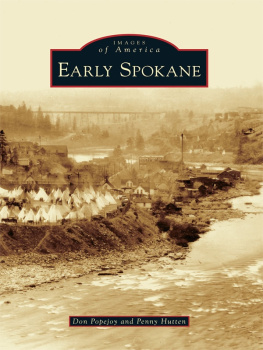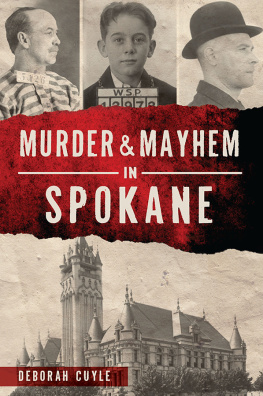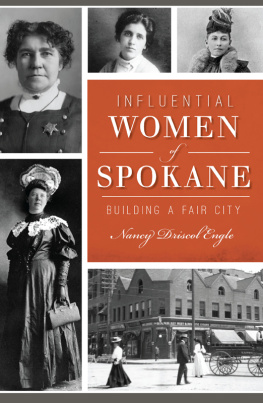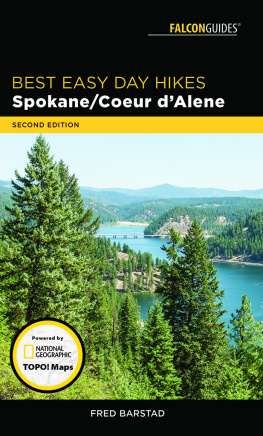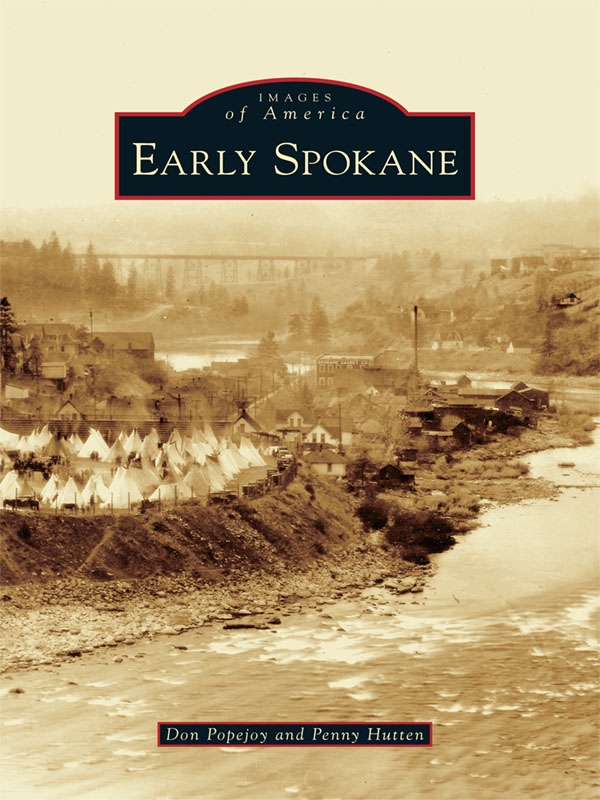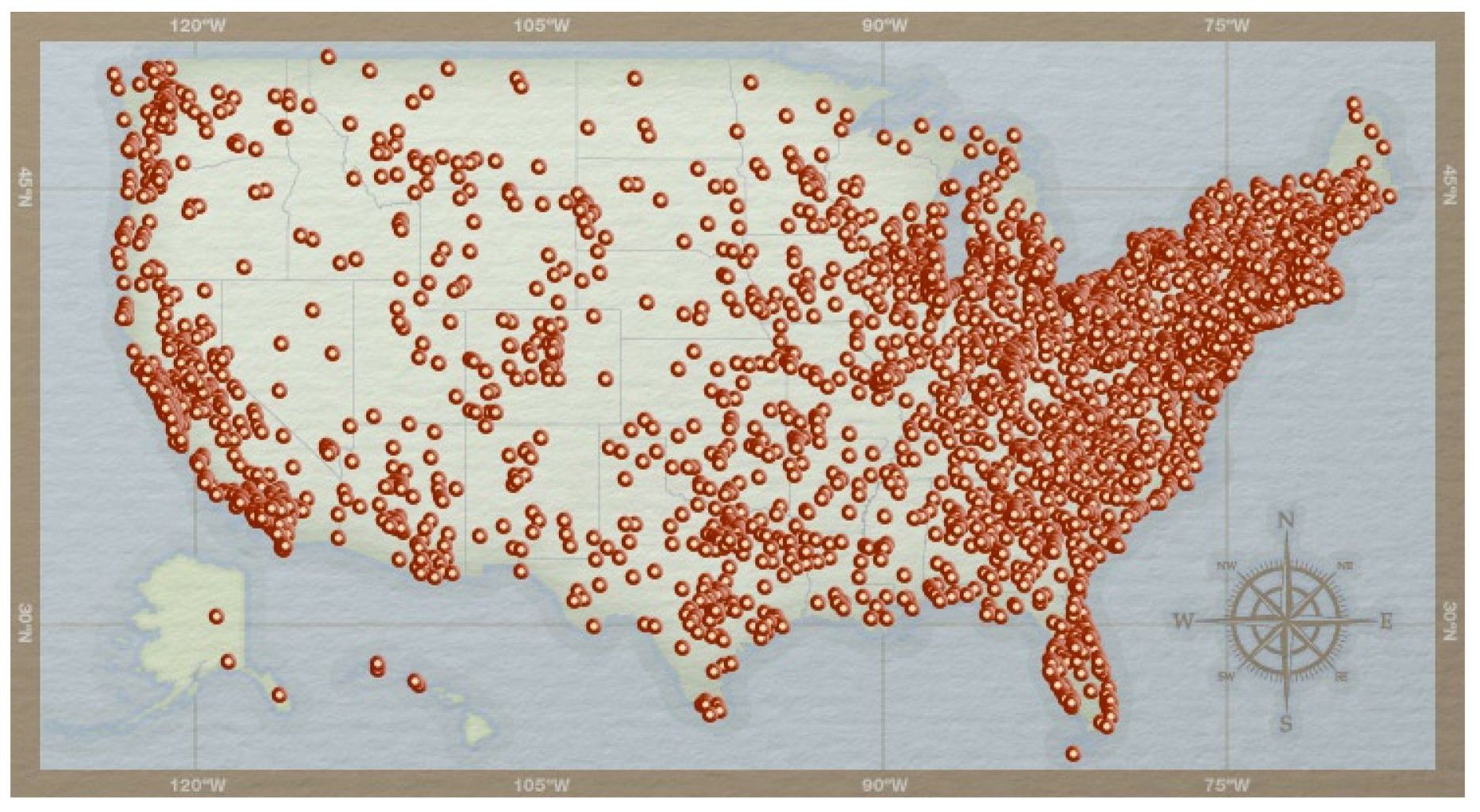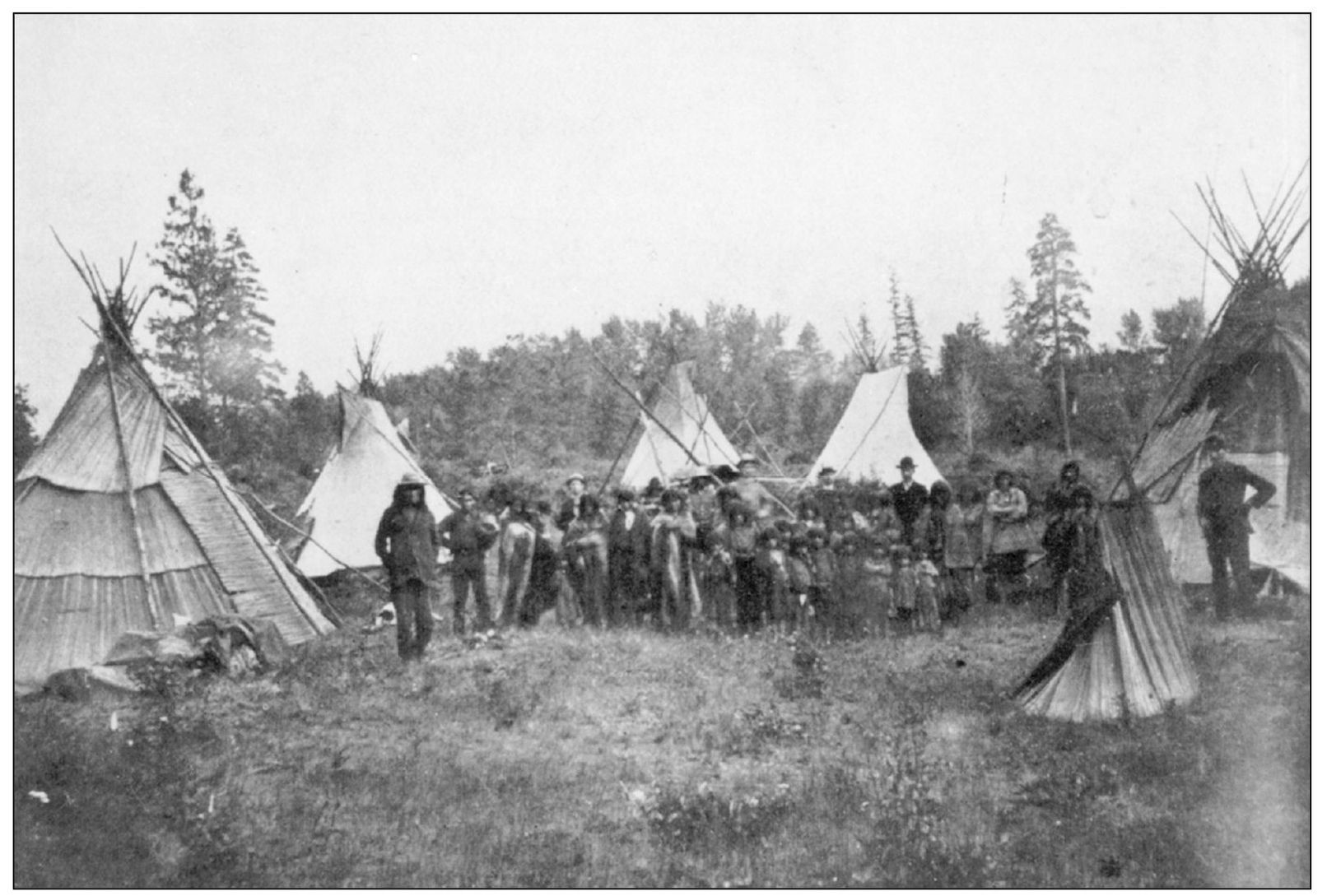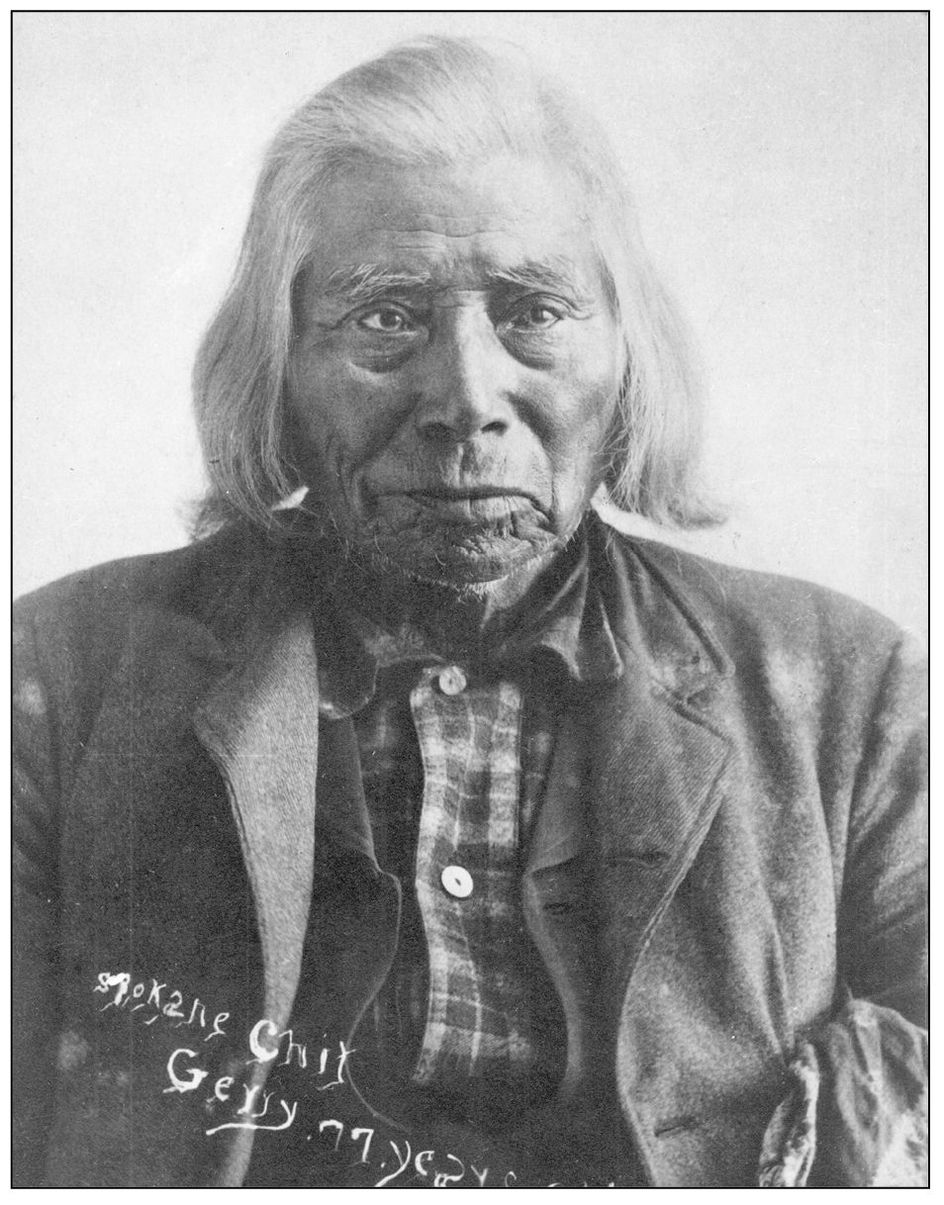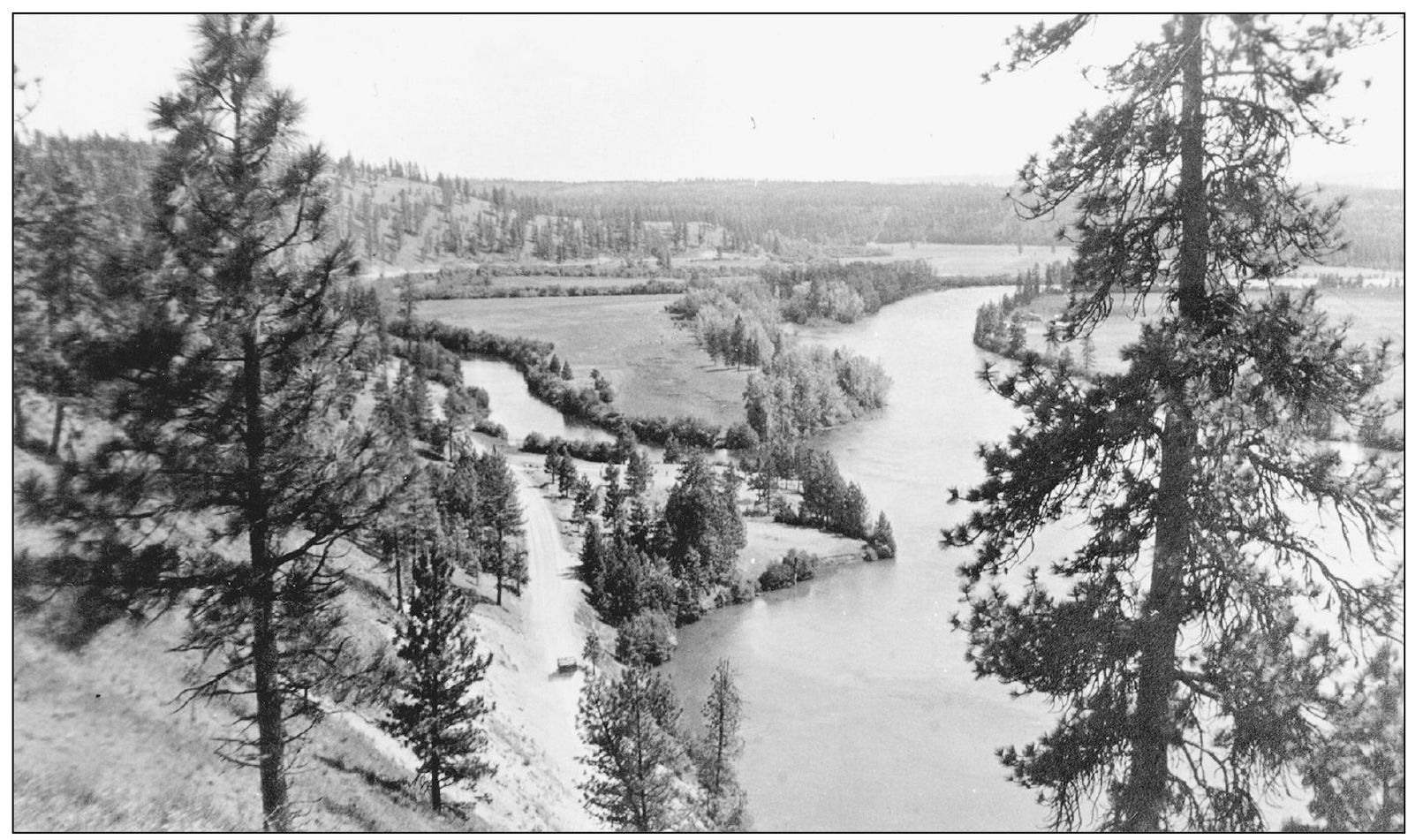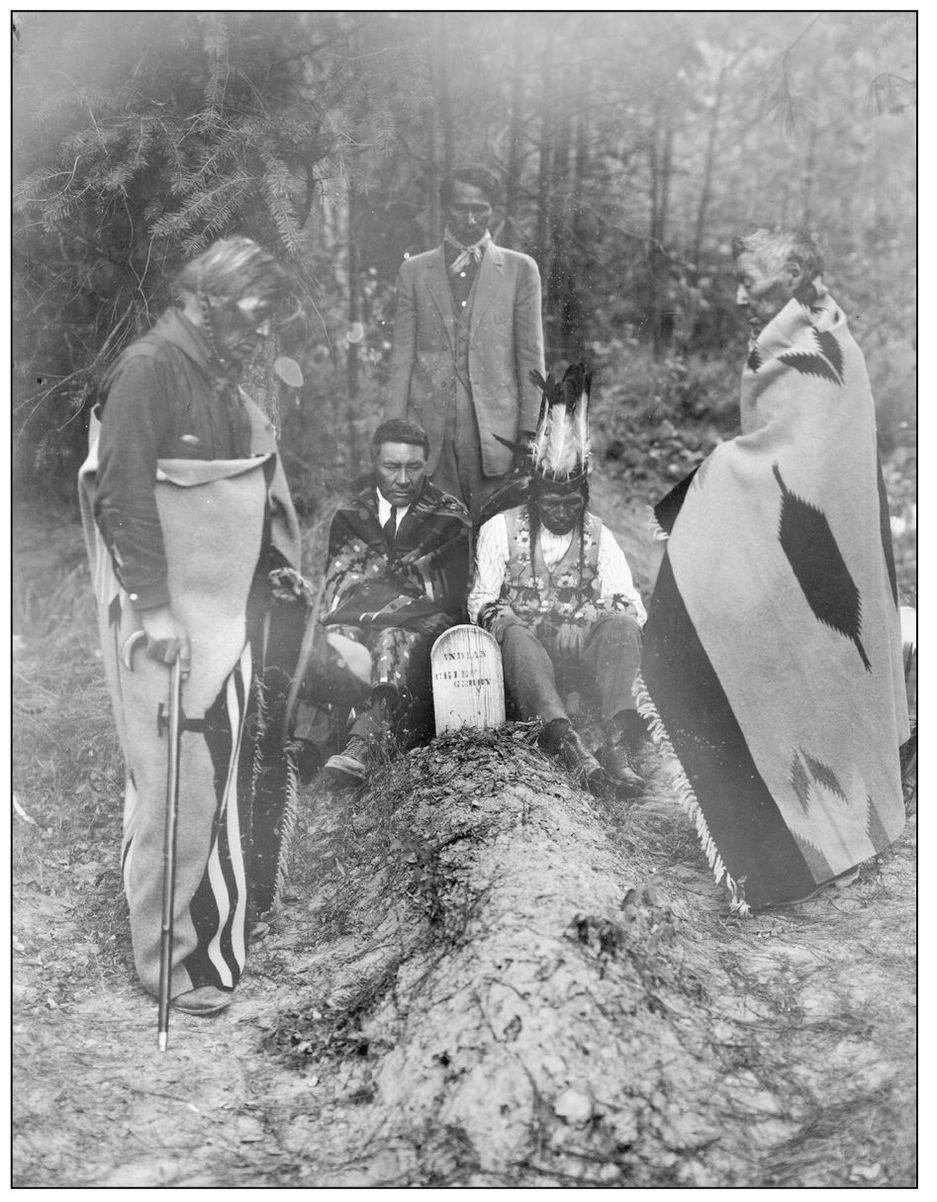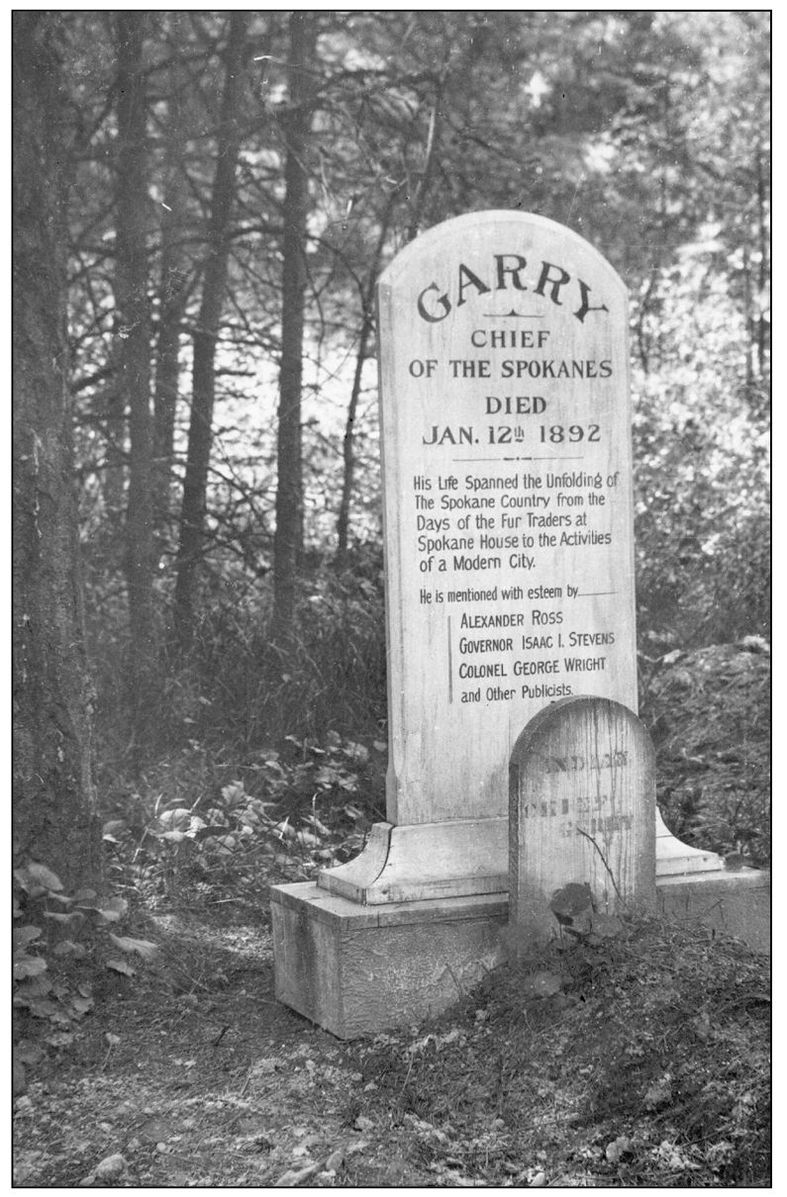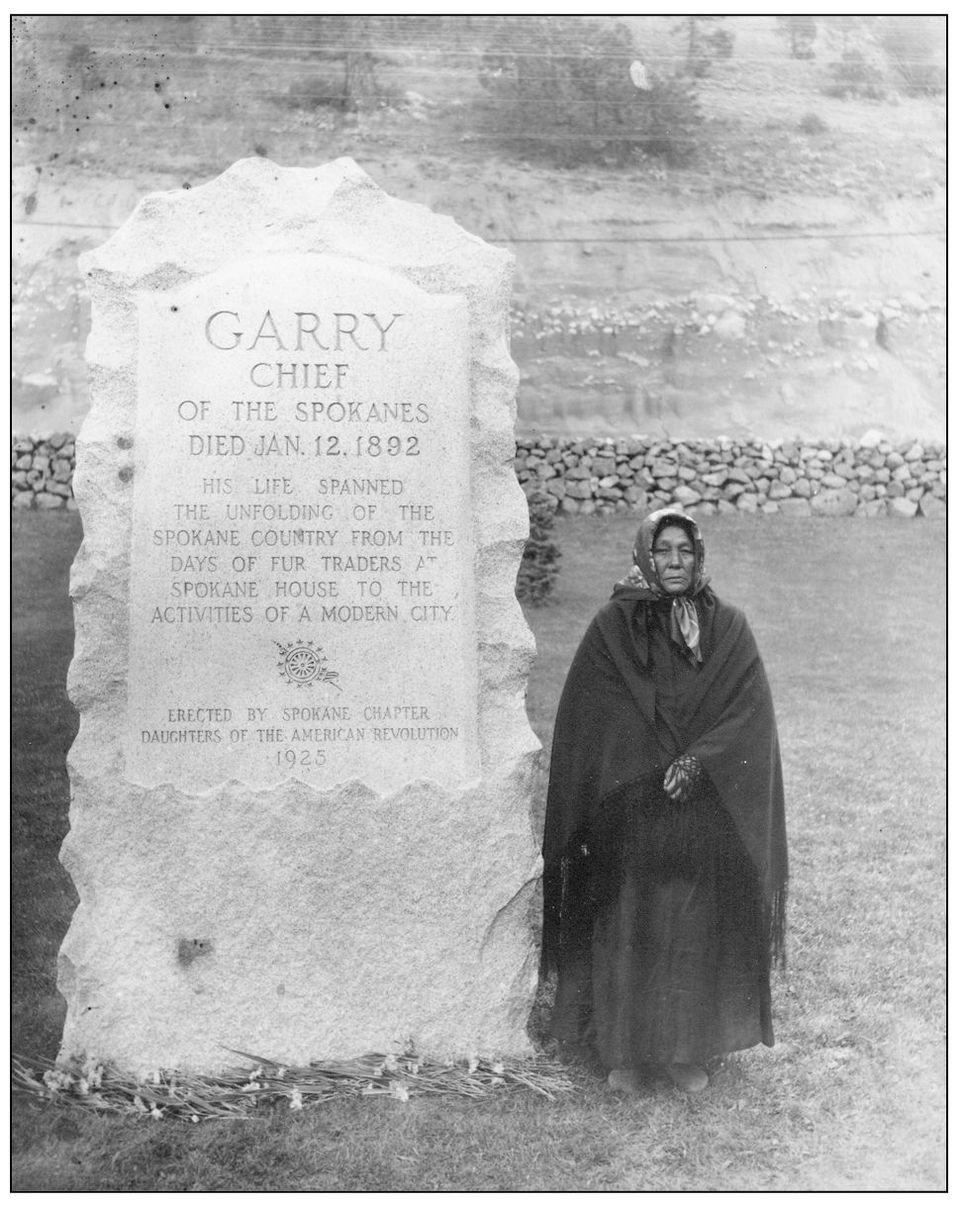ACKNOWLEDGMENTS
Our greatest debt is to Tony and Suzanne Bamonte for generously sharing their time, knowledge, and pictures. Thanks to the Inland Empire Railway Historical Society and, in particular, Gene Hawk, Ted Halloway, Michael Denuty, and Wayne Shaw. Special thanks to Reva Dean, Northwest librarian; Jane Davey, Museum of Arts and Culture archivist; Loyce Lewis; Laura Arksey; Stephanie Plowman, Gonzaga University archivist; Janet Hauck, Whitworth University archivist; Jim Kershner, Spokesman-Review; Carlton Oaks, chief executive officer of the Spokane Masonic Temple; Sue Walker, secretary/treasurer of the Spokane Police Museum; Sister Pam White of Sisters of Providence; Ron Oscarson; Jean Adams; Rob Goff; Linda Crump; Mary McKee; Larry Pointer; Duane Broyles; Bob Seagel; Peter Coffin; Richard Hazelmyer; Bob Clouse; Gary Nance; Dorothy and Daryll Bahr; Frank Peltier; Al Hughes; Loren Meierding; Gail Kersey; Evelyn Varga; Dean Ladd; Don Dashiell; Barbara Cochran; Wendy Cowden; Linda Willard; Jay Moyer; Sarah Higginbotham; Devon Weston, and Donna Libert from Arcadia Publishing.
These books were a bedrock of information during the writing of Early Spokane: Mrs. Downing Baileys Why Did I Sell Spokane Falls?; Rev. Jonathan Edwardss book History of Spokane County 1900 and the use of his phrase Brave Men and Devoted Women; Nelson Durhams History of the City of Spokane 1912 Volumes I-III; The Inland Empire Volumes I-IV by George W Fuller (1928); News for an Empire by Ralph E. Dyar; Spokane Corona Eras and Empires by Edmund T. Becher; Shaping Spokane by John Fahey; The Pacific Northwestern publications Volumes 1-53; Tornado Creek Publications; Spokane and the Inland Northwest by Tony and Suzanne Bamonte, The Spokane Aviation Story and The McGoldrick Lumber Company Story by Jim McGoldrick, Manito Park by Tony and Suzanne Bamonte, Life Behind the Badge, Miss Spokane by Tony and Suzanne Bamonte, Spokane Set in Stone by Dick Jensen; The White Cascade by Gary Krist; Bold Spirit by Linda Lawrence Hunt, Exploring Spokanes Past by Barbara Cochran (1984), First Class for 100 Years 18891989: Spokane Public Schools; and finally, the digital media using historylink.org and Googles online archived newspapers.
The images in this volume appear courtesy of the Northwest Room, Spokane Public Library (NRSPL); the following collections of the Northwest Room, Spokane Public Library: Teakle (TCNRSPL), E. T. Becher (ETBCNRSPL), and Boughton (BCNRSPL); the Jerry Quinn Collection of photographs by Charles Libby (JQCPBCL); the Tony and Suzanne Bamonte Collection (TASBC); the Richard Sheuerman Collection (RSC); and the Don Popejoy Collection (DPC).

Find more books like this at
www.imagesofamerica.com
Search for your hometown history, your old
stomping grounds, and even your favorite sports team.
One
CHILDREN OF THE SUN
As the town of Spokan Falls developed and expanded, the Spokans relocated to the confluence of Latah Creek and the Spokane River. The Spokans raised their tipis in Indian Canyon and Peaceful Valley. This c. 1880 photograph shows their campsite in Peaceful Valley, along the Spokane River, west of town. Among the traditional hide tipis, there are several tule or reed mat lodges. (ETBCNRSPL.)
Born in 1811, Spokan Garry, the youngest son of Chief Illim-Spokanee, was destined to become chief of the Middle Spokans. At the tender age of 14, Garry was chosen by the Hudsons Bay Company to become a leader and teacher for his people. Garry received a white mans education and was taught his religion at the Red River Missionary School in Winnipeg, Canada. In 1831, Garry set up the first school in the Northwest, by the confluence of two rivers known as the Pointed Heart River and the Trout River. Garry taught agriculture, how to read and write, and the Christian way of life. Garry soon became a man of two different cultures. The sadness in Chief Garrys face below reflects the strain and pressure of living in a world of change. (Above, courtesy of TCNRSPL; below, courtesy of NRSPL.)
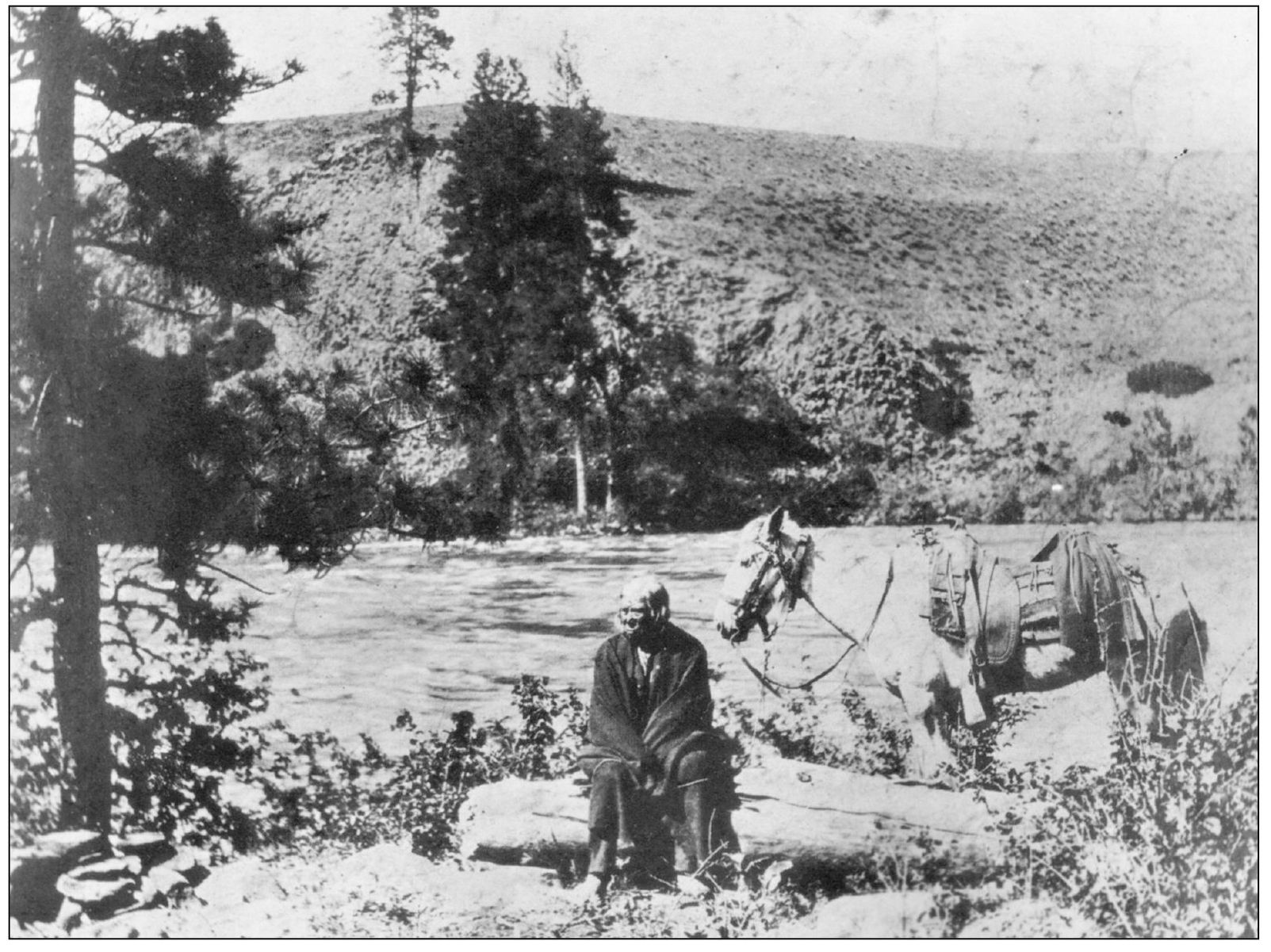
The Spokans consisted of three different villagesthe Upper, Middle, and Lowereach under its own chief and counsel, but all considered one Nation. The Middle Spokans, Chief Garrys village, consisted of the land between todays community of Tum Tum and the mouth of Latah Creek, where it joins the Spokane River. The Spokans established semipermanent camps alongside these watercourses, and their main fisheries were situated at the little falls of the Spokane, the confluence of the Pointed Heart (now Spokane River) and the Trout River or the Little Spokane River as in the picture above, the mouth of Latah Creek, and the great falls of the Spokane River. The civilized life of Spokan Garry, pictured at right, caused him much despair. He seemed most content while he was at his school teaching his people the Christian way of life. (Courtesy of TASBC.)
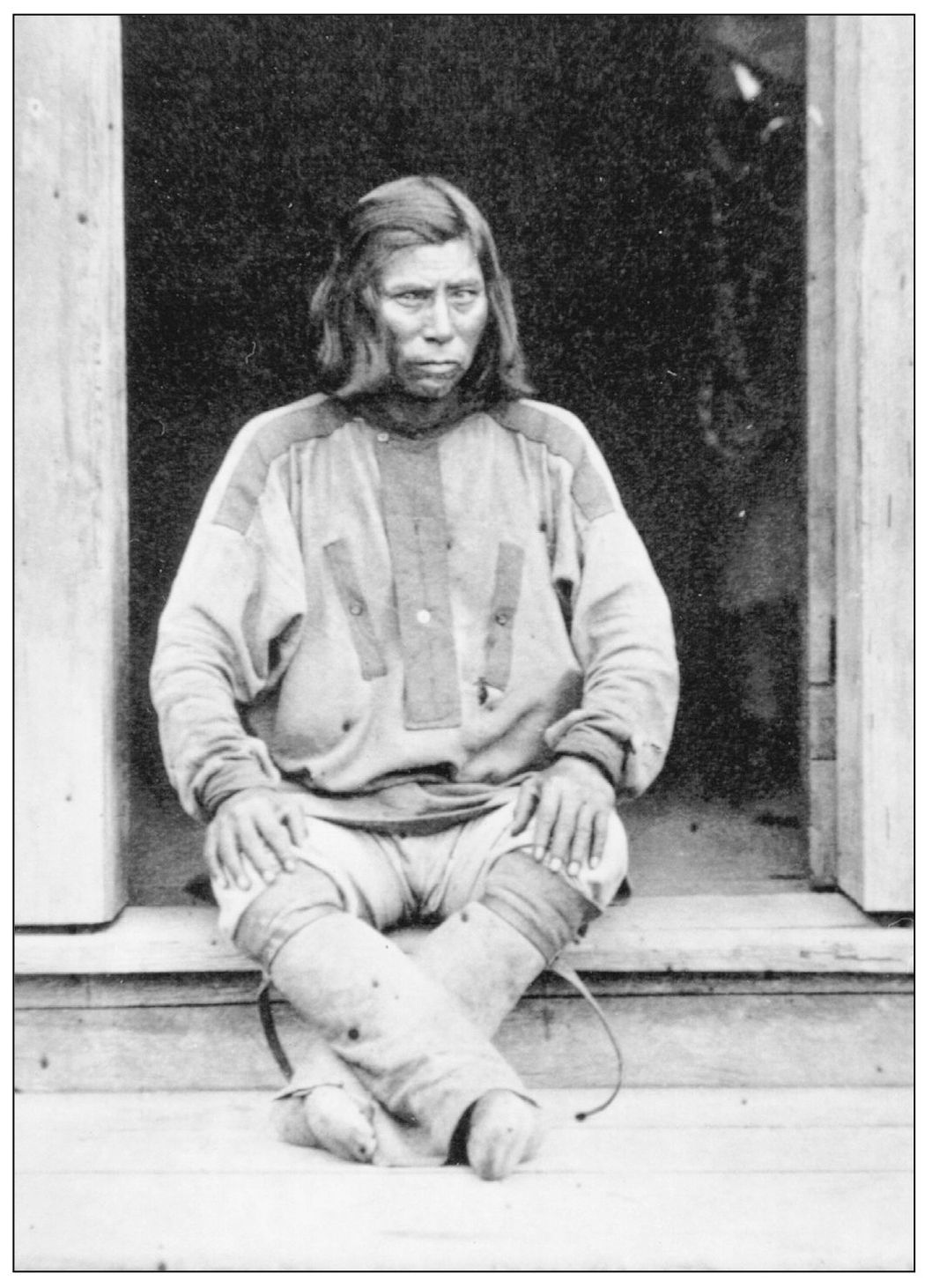
Garrys anxiety soon ended his life as a public preacher, and he closed his school in 1840. However, during the winter of 1870-1871, Garry opened his second school. He returned to preaching and started a religious revival among his people, but in early 1875, Rev. H. T. Cowley opened his Indian school and all but shut down Garrys latest endeavor. Chief Garry, a broken and bitter man, died January 12, 1892, and was buried in a wooded area on the heights near his beloved Spokane River, as seen in the image at left. Below is a photograph of a gravestone erected at Garrys burial site in the late 1890s, with the notable names of Alexander Ross, an explorer of the Columbia Plateau; Isaac I. Stevens, governor of Washington Territory; and Col. George Wright, who brought the Spokan Indian war to a violent end in September 1858. (Above, courtesy of NRSPL; below, courtesy of TCNRSPL.)

